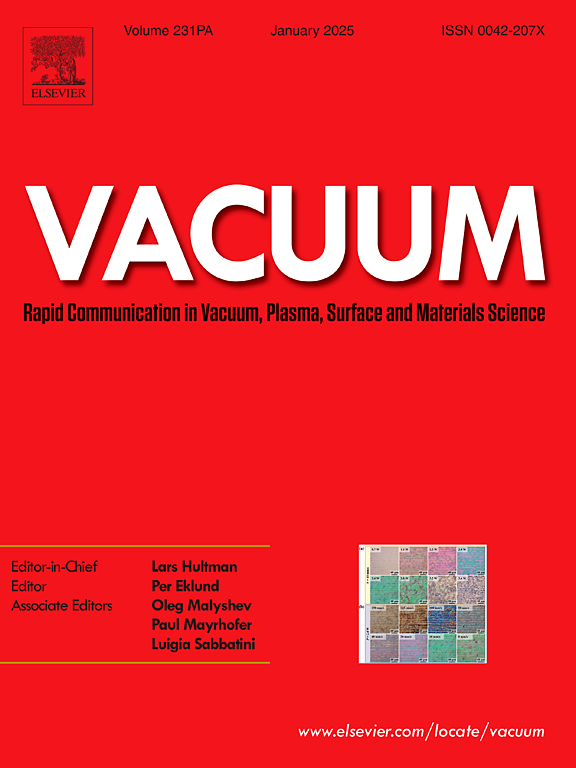Investigation of the discontinuous change in the anode potential drop in a helium glow discharge with a cylindrical hollow cathode
IF 3.8
2区 材料科学
Q2 MATERIALS SCIENCE, MULTIDISCIPLINARY
引用次数: 0
Abstract
Experimental and numerical investigations of a DC glow discharge in helium, operating between a cylindrical hollow cathode and a flat anode, were conducted in a 25 mm diameter tube with a 25 mm interelectrode gap. Experimentally, it was found that at a gas pressure of 2.6 Torr, an intense glow appears near the anode surface, which intensifies with increasing pressure. Probe measurements of the potential between the anode and the probe revealed a sharp potential drop when the pressure increased from 2.4 Torr to 2.6 Torr. Numerical calculations showed that as the gas pressure rises, the excitation reaction rate of the helium resonant level decreases in the interelectrode space, but increases near the anode. At a pressure of 4 Torr, the excitation reaction rate at the anode surface becomes an order of magnitude higher than in the region between the cathode and anode. Additionally, the numerical calculations indicated that under the conditions considered, the electric field near the anode is always positive, leading to a positive anode potential drop.
求助全文
约1分钟内获得全文
求助全文
来源期刊

Vacuum
工程技术-材料科学:综合
CiteScore
6.80
自引率
17.50%
发文量
0
审稿时长
34 days
期刊介绍:
Vacuum is an international rapid publications journal with a focus on short communication. All papers are peer-reviewed, with the review process for short communication geared towards very fast turnaround times. The journal also published full research papers, thematic issues and selected papers from leading conferences.
A report in Vacuum should represent a major advance in an area that involves a controlled environment at pressures of one atmosphere or below.
The scope of the journal includes:
1. Vacuum; original developments in vacuum pumping and instrumentation, vacuum measurement, vacuum gas dynamics, gas-surface interactions, surface treatment for UHV applications and low outgassing, vacuum melting, sintering, and vacuum metrology. Technology and solutions for large-scale facilities (e.g., particle accelerators and fusion devices). New instrumentation ( e.g., detectors and electron microscopes).
2. Plasma science; advances in PVD, CVD, plasma-assisted CVD, ion sources, deposition processes and analysis.
3. Surface science; surface engineering, surface chemistry, surface analysis, crystal growth, ion-surface interactions and etching, nanometer-scale processing, surface modification.
4. Materials science; novel functional or structural materials. Metals, ceramics, and polymers. Experiments, simulations, and modelling for understanding structure-property relationships. Thin films and coatings. Nanostructures and ion implantation.
 求助内容:
求助内容: 应助结果提醒方式:
应助结果提醒方式:


